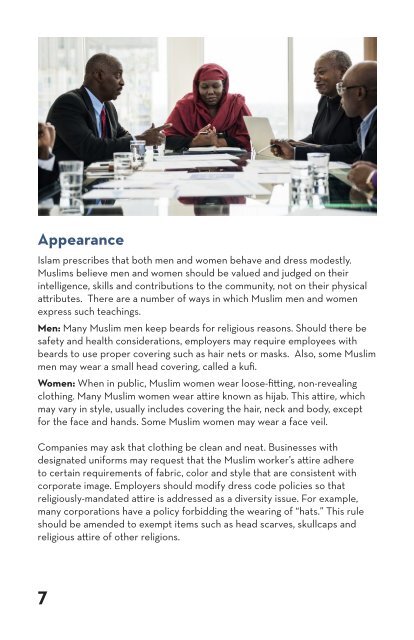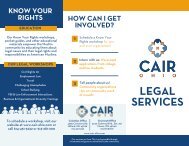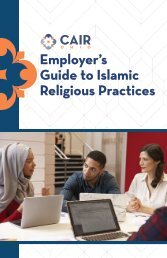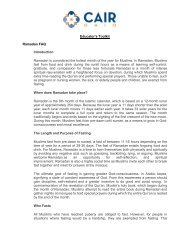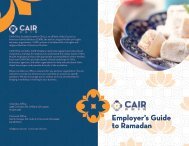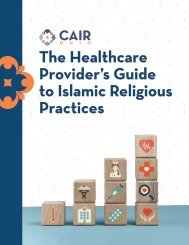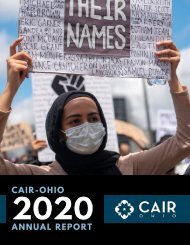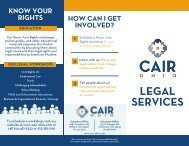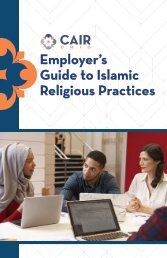CAIR-Ohio Employer's Guide to Religious Practices
Create successful ePaper yourself
Turn your PDF publications into a flip-book with our unique Google optimized e-Paper software.
Appearance<br />
Islam prescribes that both men and women behave and dress modestly.<br />
Muslims believe men and women should be valued and judged on their<br />
intelligence, skills and contributions <strong>to</strong> the community, not on their physical<br />
attributes. There are a number of ways in which Muslim men and women<br />
express such teachings.<br />
Men: Many Muslim men keep beards for religious reasons. Should there be<br />
safety and health considerations, employers may require employees with<br />
beards <strong>to</strong> use proper covering such as hair nets or masks. Also, some Muslim<br />
men may wear a small head covering, called a kufi.<br />
Women: When in public, Muslim women wear loose-fitting, non-revealing<br />
clothing. Many Muslim women wear attire known as hijab. This attire, which<br />
may vary in style, usually includes covering the hair, neck and body, except<br />
for the face and hands. Some Muslim women may wear a face veil.<br />
Companies may ask that clothing be clean and neat. Businesses with<br />
designated uniforms may request that the Muslim worker’s attire adhere<br />
<strong>to</strong> certain requirements of fabric, color and style that are consistent with<br />
corporate image. Employers should modify dress code policies so that<br />
religiously-mandated attire is addressed as a diversity issue. For example,<br />
many corporations have a policy forbidding the wearing of “hats.” This rule<br />
should be amended <strong>to</strong> exempt items such as head scarves, skullcaps and<br />
religious attire of other religions.<br />
7


